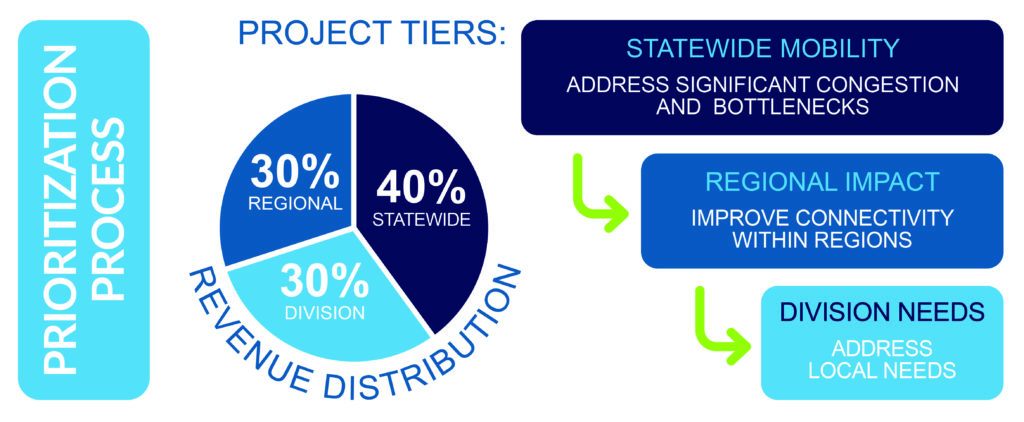THE STRATEGIC PRIORITIZATION PROCESS
The Strategic Prioritization Process is a data-driven, transparent method for prioritizing transportation projects and is used to develop the State Transportation Improvement Program (STIP)/ Metropolitan Transportation Improvement Program (TIP), which identify the projects that will be funded during a 10-year period. Prioritization scores all roadway, public transportation, bicycle & pedestrian, rail, ferry, and aviation projects based upon approved criteria.
Prioritization 7.0
The project submittal window for Prioritization 7.0, which will inform the 2026-2035 State/MPO Transportation Improvement Program, opened on July 24, 2023. The WMPO is coordinating with local planning partners to select project submittals from the adopted Cape Fear Moving Forward 2045 Metropolitan Transportation Plan. A 14-day public comment plan for the WMPO’s draft project submittals was opened at the MPO Board’s July 26, 2023 meeting. The Board will consider the approval of the WMPO project submittals at it’s August 30, 2023 Board meeting.
WMPO draft project submittal lists for P7.0
Once project submittals are approved by the MPO Board, staff will submit the details of each project to NCDOT for scoring. Draft scores of all submitted projects are anticipated for release in spring 2024. To learn more about the Prioritization 7.0 process, visit NCDOT’s Prioritization Resources page.
HOW IT WORKS
Projects receive a percentage of available revenue in the following three categories: Statewide Mobility (40%), Regional Impact (30%), and Division Needs (30%). The Statewide Mobility projects are 100% data driven and selected based on quantitative scores. Regional Impact projects focus on improving connectivity within regions (7). Selection is based on 70% data and 30% local input. Division Needs projects focus on addressing local needs, and selection is based on 50% data and 50% local input. The WMPO along with NCDOT Division 3 will assign local input points to the Regional Impact and Division Needs tier projects based on approved methodology. This assignment will take place in the Spring and Fall of 2018. Projects with the highest scores will have a greater chance of being programmed into the STIP/Metropolitan TIP.
